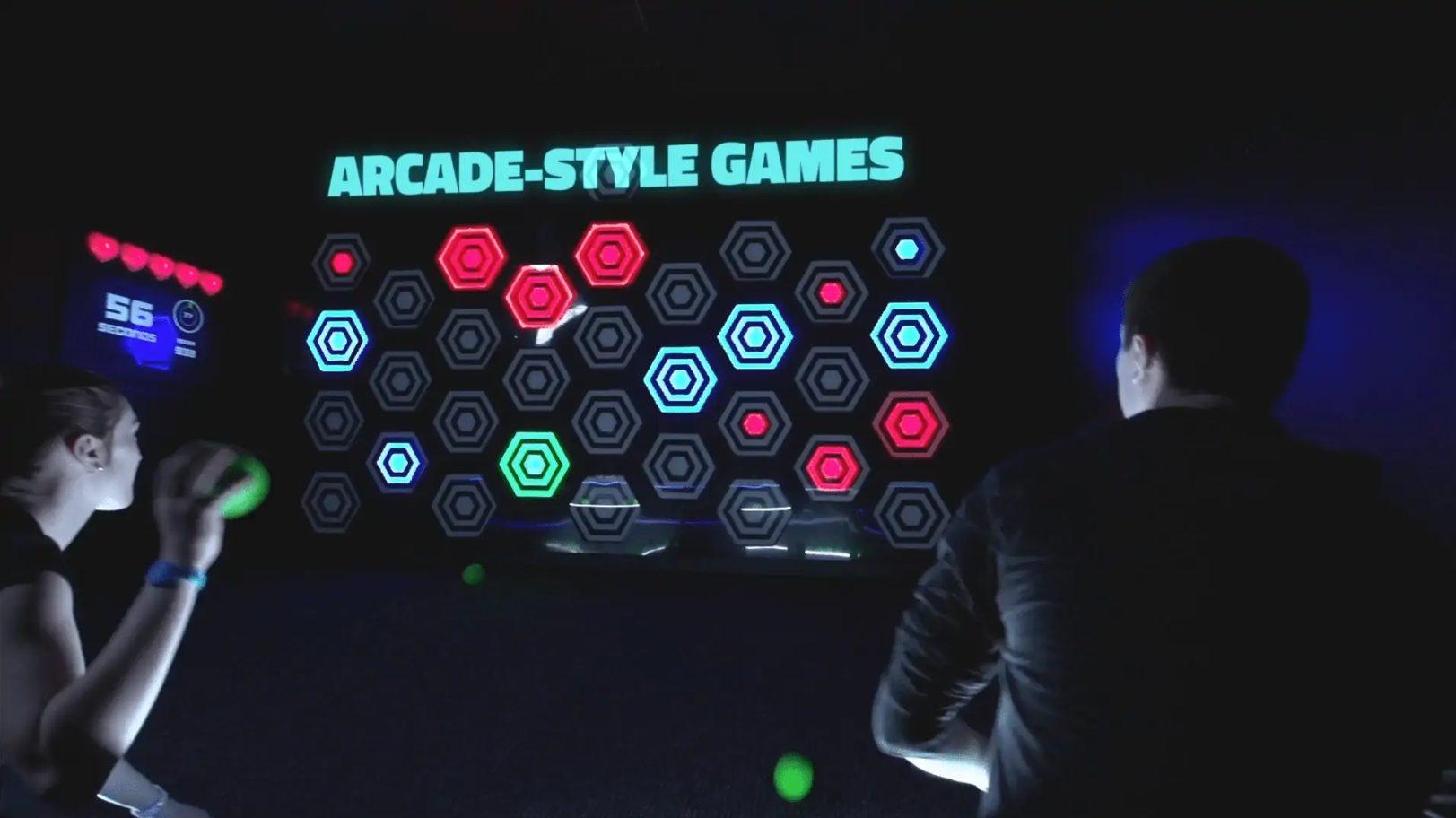-
How it works: A digital projector casts animated graphics onto a physical space. Meanwhile, motion-sensing cameras or depth sensors (like Kinect) track the movement of players within that space. The software connects the two, so when a player steps on a “lava tile,” the sensor registers the movement and the software instantly updates the projection to show an eruption. This creates the illusion that the player is directly interacting with the digital environment.
-
How it works: Walls or grids are embedded with thousands of LED lights. These lights can be programmed to display targets, patterns, or countdowns. Behind the scenes, touch sensors or cameras detect when a player makes contact with a specific section. For example, in a dodgeball-style game, striking an LED target with a soft ball triggers a sensor that tells the system to change that light’s color or turn it off, registering a hit.
-
Types of Sensors: These can include infrared sensors, pressure mats, laser tripwires (like in laser mazes), and inertial sensors within props. They continuously feed data to the central game engine, which processes the information and determines the game’s outcome in real-time.



发表回复